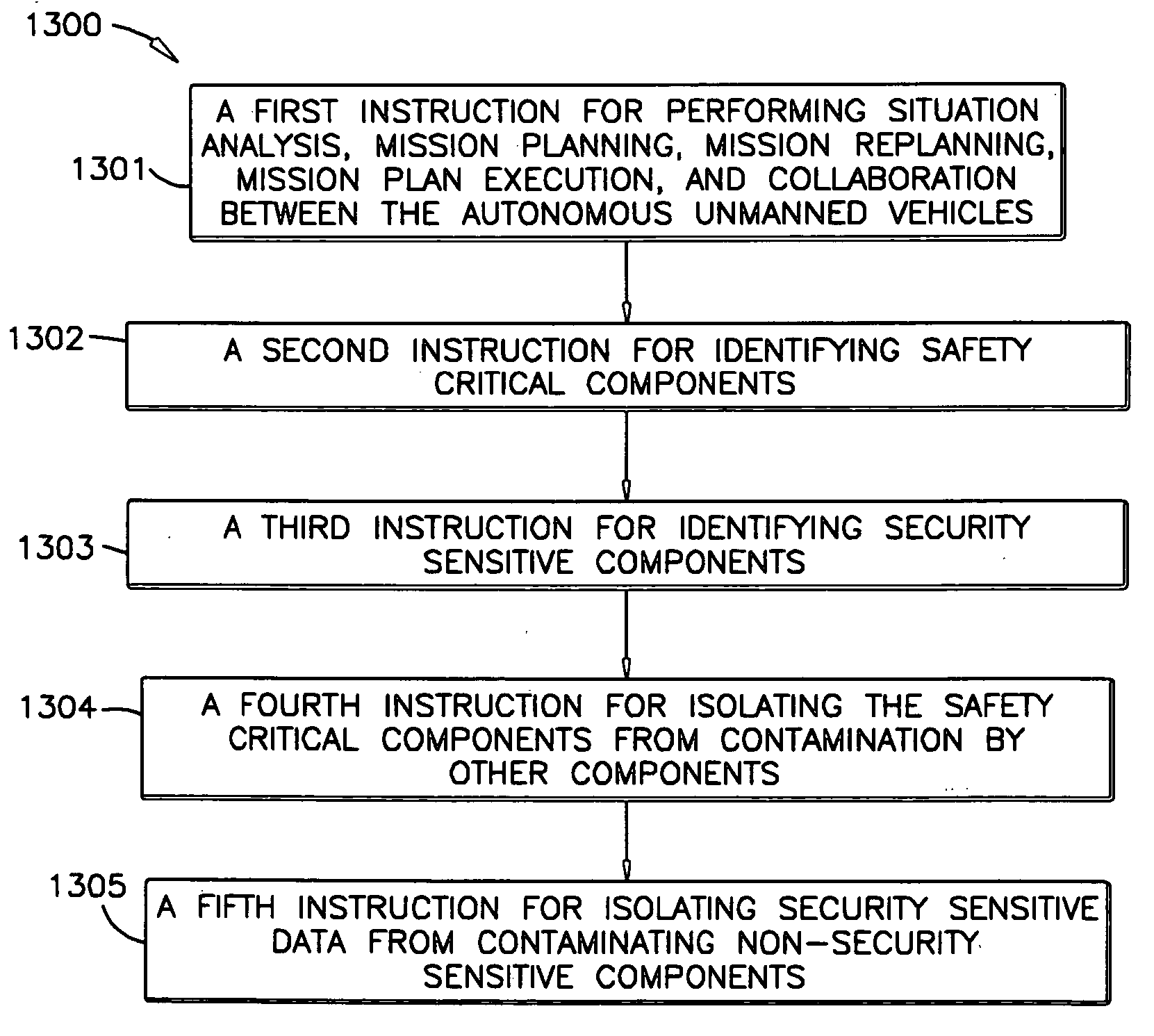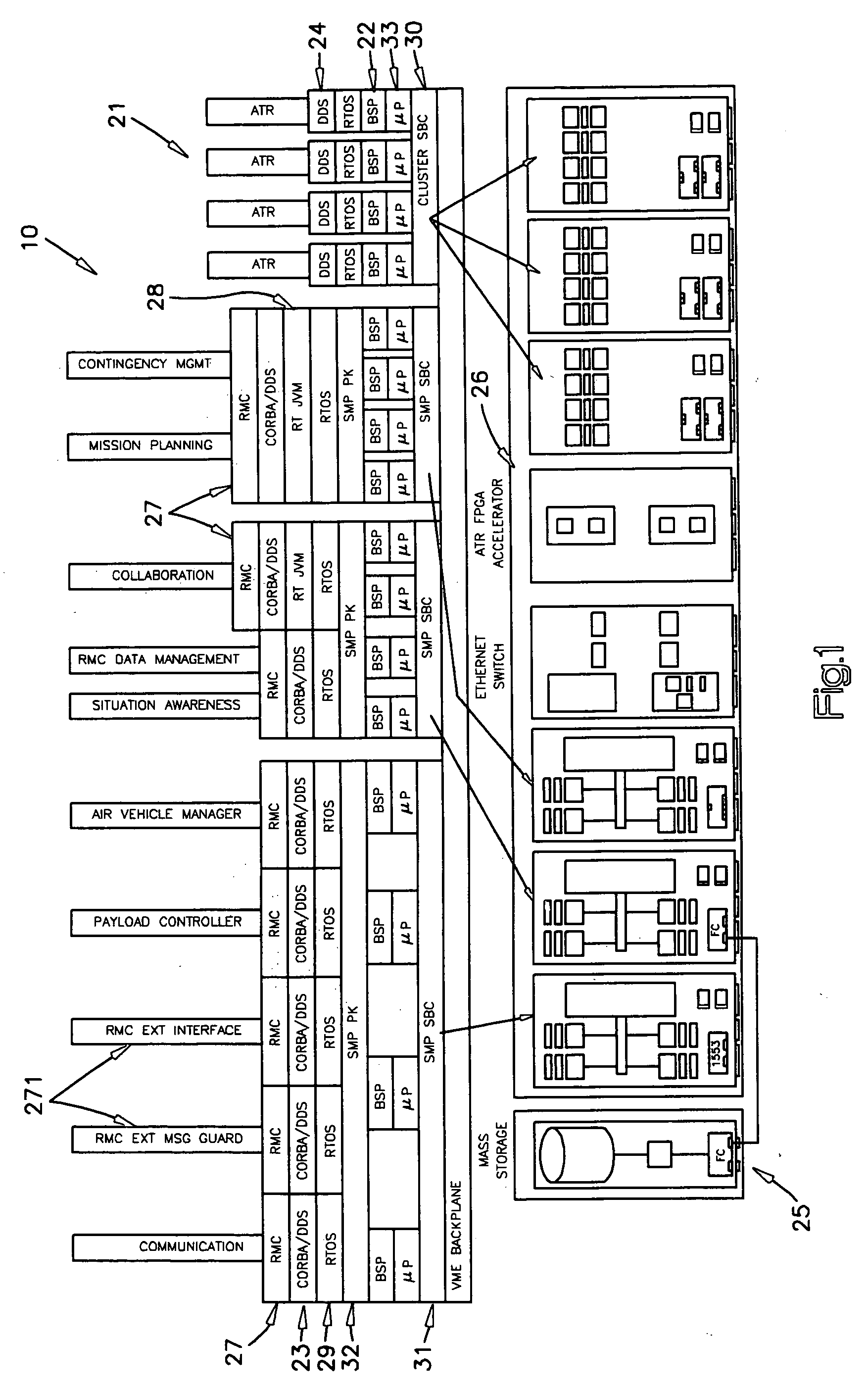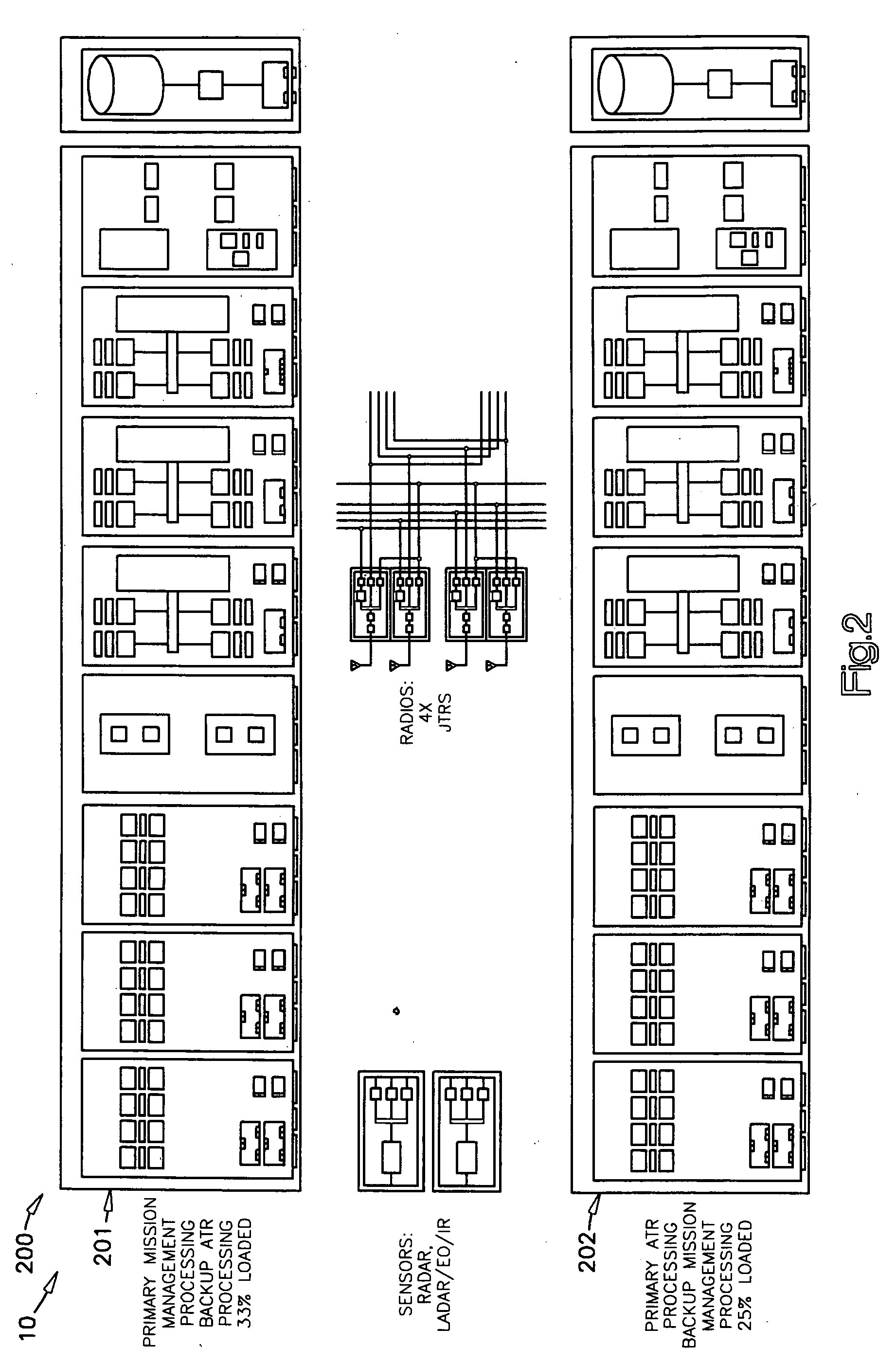System for controlling unmanned vehicles
a technology for unmanned vehicles and autonomous collaboration, applied in the direction of distance measurement, navigation instruments, instruments, etc., can solve the problems of reducing the effectiveness of warfighters, limiting the autonomy of autonomous systems, and unable to recognize the different disciplines required to perform various functions, so as to ensure the safety and security of teams
- Summary
- Abstract
- Description
- Claims
- Application Information
AI Technical Summary
Benefits of technology
Problems solved by technology
Method used
Image
Examples
Embodiment Construction
[0031] A system in accordance with the present invention defines an infrastructure for autonomous planning and control of collaborating teams of unmanned vehicles. The system may extend a proposed collaborative autonomy control system. The system provides a processing platform on which collaborative autonomy may be executed. The system may partition data and processing on the basis of safety criticality, as well as security classification. In addition, the system may provide a platform more suitable to the flexibility and adaptability demands of collaborative autonomy than conventional approaches.
[0032] As shown in FIG. 1, an example system 10 may define a platform on which to build a scalable autonomous collaborative infrastructure. The system 10 includes the following components: ATR (Automatic Target Recognition) 21, BSP (Board Support Package) 22, CORBA (Common Object Request Broker Architecture) 23, DDS (Data Distribution Service) 24, FC (Fiber Channel) 25, FPGA (Field Program...
PUM
 Login to View More
Login to View More Abstract
Description
Claims
Application Information
 Login to View More
Login to View More - R&D
- Intellectual Property
- Life Sciences
- Materials
- Tech Scout
- Unparalleled Data Quality
- Higher Quality Content
- 60% Fewer Hallucinations
Browse by: Latest US Patents, China's latest patents, Technical Efficacy Thesaurus, Application Domain, Technology Topic, Popular Technical Reports.
© 2025 PatSnap. All rights reserved.Legal|Privacy policy|Modern Slavery Act Transparency Statement|Sitemap|About US| Contact US: help@patsnap.com



